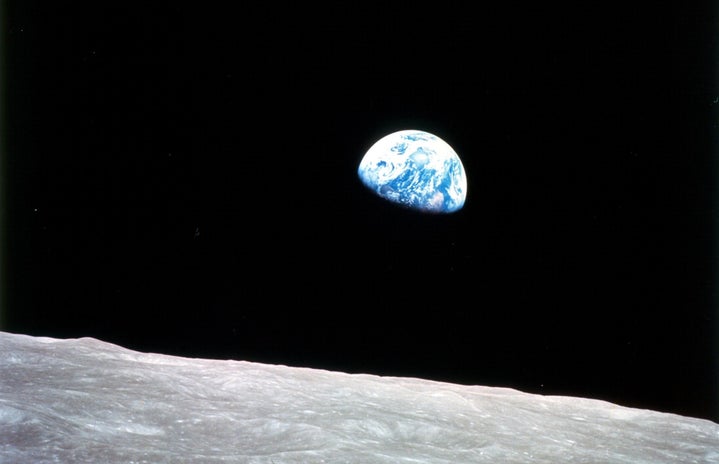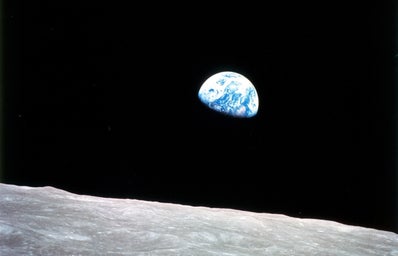The 2024 Solar Eclipse took place on Apr. 8. Leading up to the astronomical event, news feeds and social media ‘for you’ pages alike were adorned with every kind of eclipse-related content imaginable. Now, NASA has just reported that the next time the United States will be be able to view another total solar eclipse, expected in August 2044—and people are already starting to mark their calendars!
I was fortunate enough to have been able to to view the eclipse in full totality with my partner, and we too have also started to mark our mental agendas for the orbital occasion. If you’re looking to be “eclipse-ready” just like us, here are a few ways you can be properly prepared for the next viewing from someone who’s already done the whole solar shebang once before!
- Map Out the Path of Totality Beforehand
-
The “path of totality” refers to the path the eclipse can be viewed from, with the sun completely covered by the moon. For this most recent eclipse, the path of totality was shown to expand from Texas to Maine, in a uniform swath.
Surrounding states that fell outside this projected path, like Florida, were only able to catch a partial view of the eclipse. While still an enriching experience, being able to see the eclipse in complete totality bodes a different kind of surrealism. The temperature starts to drop, the sky becomes darkened, and solar bands become observable to the naked eye! It’s something you’d want to experience at least once in your life.
News coverage on an upcoming eclipse usually comes out months before its view date. Synonymously, the path of totality is accurately predicted way ahead of its arrival. For this reason, deciding where to go is a lot easier if you want the full viewing!
- Make Your Travel Preparations Ahead of Time
-
Once calendars become marked for an upcoming eclipse, booking travel affairs and destination viewings become the first thing on viewers’ ‘to-do’ lists. Because of this, reservations for hotels, flights, and rental cars fill up fast, especially before prices start to go up.
We booked our trip a month in advance, and even then it was a little hard to plan around the astronomically increasing prices. If you’re aiming to go somewhere that falls under the path of totality while still wanting to stay economically conscious, it could be in your best interest to visit a ‘middle-of-nowhere’ city instead of the more heavily-populated, tourist destinations. For this eclipse, we noticed that airfare and hotel prices were exponentially more expensive in states like Texas and New York in comparison to Illinois and Missouri.
We opted to view the eclipse under full totality in the tucked-away town of Pocahontas, Arkansas. For us, it was most affordable to fly into Memphis, Tennessee, and take a rental car drive up to Arkansas. The short road trip was only two hours long, and boded beautiful views of what rural America is like along the way! We even passed sites like Graceland, the Mississippi River, and the Bass Pro Shop Pyramid.
- Keep track of time and weather
-
On the day of a solar eclipse, keeping track of the time and weather is crucial in determining how good of a viewing you’ll get. Depending on where in the country you decide to watch the eclipse, the expected time that the moon reaches full totality will differ for each state. In Arkansas, totality was to hit at 2 p.m., so we were able to plan out our flight arrival and drive time.
Making sure you’re under optimal weather conditions is something else to take note of. Clear skies without cloud coverage is the best standard for watching a solar eclipse since there won’t be any obstructions for viewing. Using weather channels and live forecasts, you’ll be able to tell if your destination will be compromised for a clear sky on that day.
With that in mind, it may also help to have a backup location. Fortunately for us, Arkansas skies were without a single cloud, but just in case, Carbondale, Illinois would have only been another hour out of the way.
- Pick out the best spot for viewing
-
Whether you’d rather enjoy viewing the eclipse in the company of like-minded space fanatics, or opt for a more nomadic-esque experience, looking for your desired vantage point is always a good thing to do in advance.
We decided to visit the Pocahontas Outlook Park hours before the complete totality. There, we were joined by Arkansas-native parties of families and friends setting up bases in different areas of the park grounds. If you’re heading to a more populated area, be mindful of variables like traffic, parking, and other extraneous factors to plan accordingly; in our case, it was good that we got there early since parking filled to capacity not too long after we arrived.
Friends of ours across the country were able to view the eclipse in more private settings (empty fields, high hilltops, and even Niagara Falls!) allowing for better picture opportunities and surreal, dystopian-like atmospheres.
- Get your glasses, tech, and accessories eclipse-ready
-
If you’ve watched a TikTok about anything related to the eclipse, you’ll know by now that wearing ISO-approved eclipse glasses is an absolute need if you’re participating in any watch parties. This ensures protective measures are taken for your eyes to minimize exposure to sun damage. Similarly enough, specialized lenses for cameras and telescopes are suggested to protect the lenses while also allowing for the best views and captured pictures.
While making our way to Arkansas, we were told by a local that during the eclipse we’d be able to see shadow bands of light emitted from the sun if we grabbed a white sheet and laid it flat on the ground. With a brief stay at The Comfort Inn already on our itinerary, we were able to snag a towel on our way out to put this word-of-mouth to the test. Surely enough, the bands could be seen once the eclipse was overhead – if you’re curious to see this for yourself next time, I’d suggest ensuring your surface is as flat as possible to make the bands easier to see.
Overall, I wouldn’t change a single thing about my first eclipse experience and can’t wait to put everything I’ve learned since then to make the next one even better!
A special thanks to my partner, Ryan, for planning the whole trip. He’s the best. And also a space nerd.


